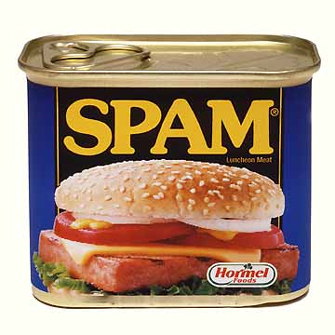Bio: Gentry Underwood is a software designer and CEO of Orchestra, which recently announced work on a mobile email app called Mailbox. You can find him on Twitter at @gentry.
Everyone complains about email. We’re awash in the stuff. We feel inundated. Overwhelmed. Out of control.
Lately there’s been quite a lot of talk about what to do about it. Jordan Crook hates it, MG Siegler tried to quit it, and Alan Henry argues you can’t. People want Gmail to speed up, Yahoo! to catch up, or, someone, anyone, to make something better. While everyone seems to agree that email is broken, no one seems sure how to fix it.
At Orchestra we’ve been digging into the email “problem” for a while now. It’s such a well-known challenge, but much of what we’ve learned has surprised us. I’d like to share some insight about how email is broken and what it would take to fix it.
How email is broken
What makes email suck? It turns out the email “problem” is actually several issues smashed together into a ménage of anxiety and pain. As a former boss of mine used to say, “It’s a real poop sandwich” (only he didn’t use the word “poop”). Here are the ingredients:
1. We get too much email that we don’t care about
For every important email, we get several others from people or services we’d rather not hear from. It’s infuriating: a little light goes off telling us we’ve got new mail, and when we see it, we often wonder “who gave you the keys to my attention?”
Email was created in an era where the total population of the internet consisted of a few hundred scientists and engineers. Back then spam wasn’t on anyone’s radar, so email addresses were designed as open doors that anyone could walk through.
The good news is that this part of the problem is largely solvable already. While we can’t force others to leave us off their CC list, junk mail filters have gotten impressively good over the years. Spam constitutes 78% of all sent email, but most of it never gets to us at all. What remains can be parsed and parceled in a number of ways. Gmail filters are an easy way to slice and dice, and services like SaneBox, Unroll.me, and Gmail’s priority inbox try to automatically push down the less important stuff. And there’s always the unsubscribe button: just take an an hour to collect and unsubscribe from all the crap you don’t actually read — it will change your life.
2. Many emails are long and convoluted
Even after you clear out the spam, many of the important emails in our inbox are difficult to digest. Sometimes the sender just needs to get to the point, sometimes they should use a different medium altogether.
We are all getting better about being concise. In the olden days, all we could compare email to were physical letters. Today we send instant messages, texts, tweets, and other short form communications to one another. More and more of us understand the value of short messages and that’s starting to change our rules about socially acceptable correspondence.
But this shift takes time, and there’s very little we can do to force the issue. When companies try to replace email outright with something more to-the-point (Google wave and Shortmail come to mind), they face the dark side of network effects: if your solution requires everyone else to switch too, you’d best forget it.
What can be done is for small groups to commit to using something other than email in specific contexts. Asana aims to replace email for project-related correspondence in workgroups, for instance. At Orchestra, many of our most active users are couples who want to avoid filling up each other’s inboxes with chores. Tools like these can help cut down on email tremendously, but they must exist in addition to email. They cannot replace it.
3. Most email clients are awful
In general the tools we use to “do” email aren’t very good at helping us. There are a number of reasons for this:
They’re designed for communication when organization is just as important. The ancient clients that today’s tools mirror were designed for communication. And while communication is obviously important, it’s only part of the picture. Our inboxes also function as (terrible) to-do lists. Every one of us has tasks trapped in our inbox, but it’s an organizational mess. As a consequence, our inboxes feel disorganized and overwhelming, producing anxiety instead of control.
They’re too slow. We get a ton of email, but our workflows are often clumsy. Processing a single message can take forever, and little delays add up quickly. There are often hidden shortcut keys and power features, but most users don’t know about them. This is basic interaction design stuff, and there’s a ton of opportunity here.
They’re relics of the desktop era. The mobile computers in our pockets are changing everything. However, most mobile email clients are actually cramped versions of their desktop counterparts which do little to take advantage of the benefits of mobile devices. We could be using these newfound wonders to give us unprecedented control over our inboxes, but the tools to do so have yet to be designed and created.
The opportunity for improvement
While working on Mailbox, we’ve come to believe that most of the opportunity to improve email comes from rethinking the inbox. It’s an approach that lets you overhaul the experience of email without trying to topple email itself. As MG Siegler recently wrote, “It’s not about replacing email. That has been tried and tried and tried and failed and failed and failed. It’s about changing the way we perceive email.”
A new inbox, particularly one that takes advantage of smartphones, can also be a gateway to addressing the other email-related problems as well. Better interfaces can encourage us to get to the point. Smarter tools can help us quickly identify candidates for future filtering. The inbox is the key to a new relationship with email.
The high bar of eligibility
A handful of other companies have drawn the same conclusion about the inbox, most notably Sparrow, Fluent, Ritual, MailPilot, Postbox and .Mail. Yet given such a massive market, the total number of contenders is surprisingly small. Some players have recently closed their doors or been acquired, while others are really little more than early concepts.
Why, if there’s so much opportunity, are there so few real attempts to rethink the inbox? In spite of the tool’s familiarly, working with email is really, really hard.
A hard technology problem: working with email at scale means having to manage a lot of data while interfacing with ancient protocols and seemingly endless edge cases. The Sparrow team spent close to 10 years developing Sparrow’s email engine. The Gmail team only recently started offering mobile push notifications for messages from their own service on iOS. With Mailbox we’ve estimated that per 100,000 users we’d need to process hundreds of messages per second during peak hours. These are formidable challenges.
A hard design problem: Designers working on email clients face a conundrum: the benefits of the product must be substantial enough to motivate people to try a new tool, while at the same time the interface needs to be familiar and intuitive. Change is hard, even when the status quo doesn’t work. A winning design will lower the adoption barrier as much as possible while still offering massive benefits in terms of overall experience. Not an easy task.
A hard business problem: In spite of how many people use email, making money in this space is challenging. For a startup to build a successful business, it must offer something significantly better than what users can get for free, and that takes time to create. Contenders need runway, ideally lots of it, but many investors fear the space. Financing challenges were central to Fluent’s shutdown, for instance.
Go big or go home
If building a better email experience is so hard, why even try? Because this is a real problem that effects, well, all of us. We all use email, and few of us like how we use it. And now is the time: this new mobile era creates massive opportunities to transform the experience of email into something fast and delightful.
We believe rethinking the inbox is a great opportunity and a frighteningly ambitious challenge — the only kind that’s really worth the blood, sweat, and tears required to get a startup off the ground and perhaps, someday, put a dent in the universe.





